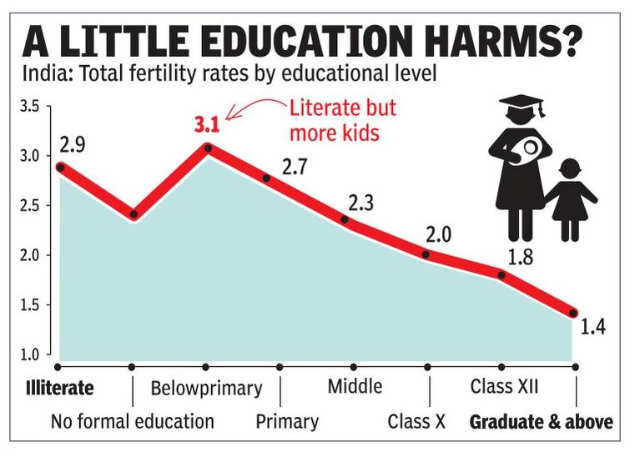Governance
Inverted-J Pattern in Education and Fertility
- 12 Aug 2019
- 2 min read
Recently released official data from 2017 on the Total Fertility Rate (TFR), reflects a complex relationship between literacy level and fertility rate.
- According to conventional wisdom: The higher the educational level of a woman, the lower the fertility rate.
- However, there’s a consistent pattern across states of illiterate women and those with no formal education having lower fertility rates than those with below primary level education.
- Culture of the state is believed to have a greater influence than education.
Pattern from TFR data
- The relationship between fertility and education resembles an inverted-J pattern.
- Usually, there is an inverse relationship between education or income and fertility, but it has been observed that fertility could go up with a slight increase in education or income level.
- But eventually, fertility declines with higher levels of education.
Highlights of the Report
- In Bihar, the TFR of women who have not completed primary schooling is 4.4 compared to 3.7 for illiterate women.
- Similarly, in Odisha with an overall low fertility rate of just 1.9, the TFR of illiterate women was 2 compared to a TFR of 3.6-3.5 among those with primary level schooling or below.
- At the all-India level, the TFR for women with below primary education was 3.1 compared to 2.9 for illiterate women and 2.4 for those without formal education.
However, according to demographers and population experts, It is very early to come up with some conclusion. Similar pattern has to emerge for three or four years (above mentioned pattern is only for the year 2017), so that this Inverted J-curve can be approved as a theory.







